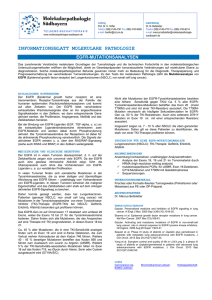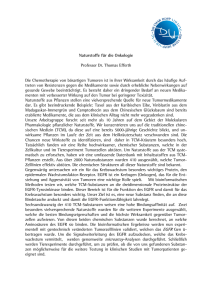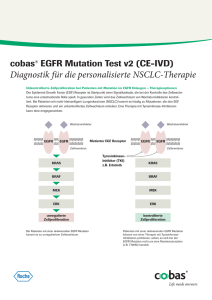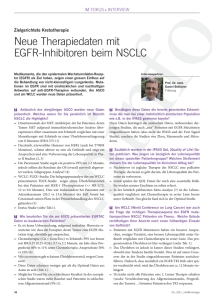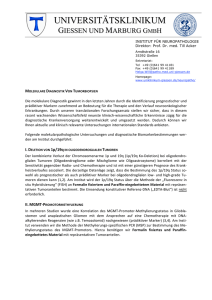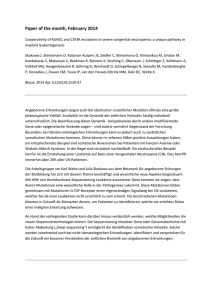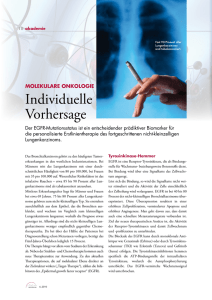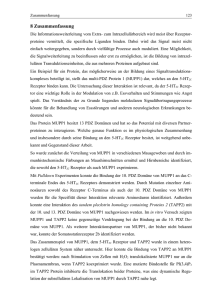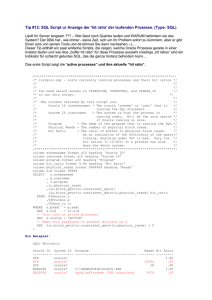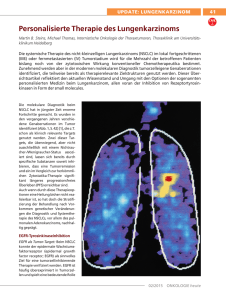Structural and Functional Characterization of - ETH E
Werbung
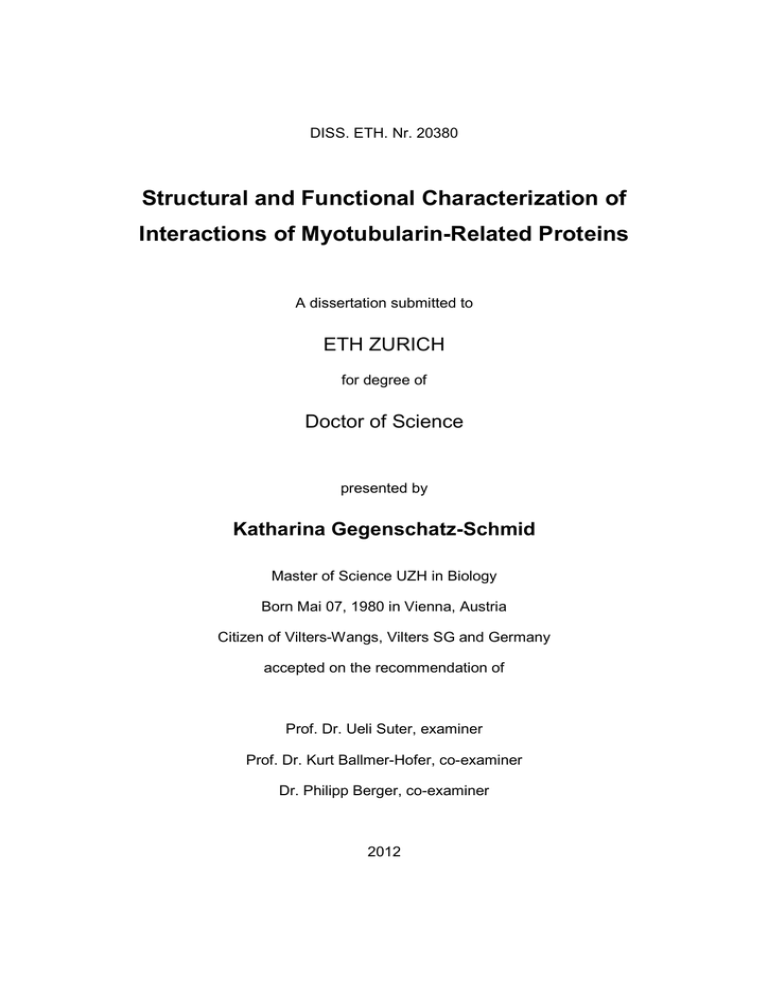
DISS. ETH. Nr. 20380 Structural and Functional Characterization of Interactions of Myotubularin-Related Proteins A dissertation submitted to ETH ZURICH for degree of Doctor of Science presented by Katharina Gegenschatz-Schmid Master of Science UZH in Biology Born Mai 07, 1980 in Vienna, Austria Citizen of Vilters-Wangs, Vilters SG and Germany accepted on the recommendation of Prof. Dr. Ueli Suter, examiner Prof. Dr. Kurt Ballmer-Hofer, co-examiner Dr. Philipp Berger, co-examiner 2012 Summary 2 Summary The Myotubularin-Related Proteins (MTMRs) represent one of the largest and most conserved subfamily of protein tyrosine/dual specificity phosphatase-like phosphatases (PTPs). Out of the 14 family members identified in the human genome, six family members contain substitutions in the phosphatase domain rendering them catalytically inactive. Mutations in the catalytically active members Myotubularin (MTM1) and Myotubularin-Related-Protein-2 (MTMR2) are associated with the physiological distinct human diseases X-linked myotubular myopathy (XLMTM), a recessive congenital muscle disorder, and Charcot-Marie-Tooth disease Type 4B1 (CMT4B1), a hereditary demyelinating neuropathy, respectively. Mutations in the inactive member MTMR13/SetBinding-Factor-2 (SBF2) cause CMT Type 4B2. It is still unclear how mutations in MTM1 and MTMR2 or SBF2 can lead to such distinct human diseases. In this work I followed two different approaches to elucidate the specificity of MTMRs: (1) the identification of novel PDZ-domain containing proteins that interact with MTMRs and (2) the structural and functional characterization of complexes between active and inactive MTMRs. I identified Pdzk2 as specific interaction partner of Mtm1. Pdzk2 is a PDZ-domain containing scaffold protein composed of four PDZ domains which has been shown to interact through its PDZ domains with ion channels, receptors, transporters and signaling molecules. Thereby it regulates the transport activity and subcellular localization of transporters and channels especially in kidney and intestine. The interaction of Pdzk2 with Mtm1 represents a possible mechanism to modulate cell surface expression of receptor/Pdzk2/Mtm1 complexes. Mtmr12/3-Pap is an inactive phosphatase and it interacts like Sbf2 with Mtmr2. The characterization of Mtmr2/3-Pap complex revealed that it exists as heterodimer, which is distinct to the tetrameric Mtmr2/Sbf2 complex. Furthermore, we could show that under hypo-osmotic conditions 3-Pap, in contrast to Sbf2, does not influence the subcellular localization of Mtmr2. Based on these structural and functional findings we suggest that the dead MTMR phosphatases can be classified into 4 Summary two groups. Thereby, the differential combinations of the different classes of inactive MTMRs with one specific active MTMR might have opposite effects on membrane identity and receptor sorting. In addition, we observed that Mtmr2 and 3-Pap localized along the recycling axis (Rab5-Rab4-Rab11) and promoted sorting of the EGF receptor (EGFR) to Rab11 positive recycling endosomes. We propose that Mtmr2 phosphatase activity influences the local composition of phosphoinositides at these membranes. This has the consequence that EGFR is redirected into the recycling pathway and is subsequently not degraded. 5 Zusammenfassung 3 Zusammenfassung Die Myotubularin-Related Proteine (MTMRs) bilden eine der grössten und am stärksten konservierten Phosphatasen (PTPs). Familienmitgliedern Unterfamilie der Protein Phosphatase-ähnlichen Von 14 im menschlichen Genom tragen sechs inaktivierende identifizierten Substitutionen in der Phosphatase-kodierenden Domäne. Mutationen in den katalytisch aktiven Mitgliedern Myotubularin (MTM1) und Myotubularin-Related-Protein-2 (MTMR2) werden mit den physiologisch unterschiedlichen menschlichen Krankheiten XChromosom gebundene myotubuläre Myopathie (XLMTM), eine erblich bedingte rezessive Muskelkrankheit, und der Charcot-Marie-Tooth Krankheit Typ 4B1 (CMT4B1), eine vererbare demyelinisierende Neuropathie in Verbinding gebracht. Mutationen im inaktiven Mitglied MTMR13/Set-Binding-Factor-2 (SBF2) lösen die Krankheit CMT Typ 4B2 aus. Es ist noch immer unklar wie Mutationen in MTM1 und MTMR2 oder SBF2 zu zwei so unterschiedlichen menschlichen Krankheiten führen können. In dieser Arbeit verfolgte ich zwei verschiedene Ansätze um eine Spezifität unter den MTMRs aufzudecken: (1) die Identifizierung von neuen PDZ-Domänen enthaltenden Proteinen die mit MTMRs interagieren und (2) die strukturelle und funktionale Charakterisierung von Komplexen zwischen aktiven und inaktiven MTMRs. Ich identifizierte Pdzk2 als spezifischen Interaktionspartner von Mtm1. Pdzk2 is ein PDZ-Domänen enthaltendes Verbindungsprotein, das aus vier PDZDomänen besteht und durch seine PDZ Domänen mit Ionenkanälen, Rezeptoren, Transportern und Signalmolekülen interagiert. Dadurch reguliert es die Transportaktivität und die subzelluläre Lokalisation der Transporter und Kanäle speziell in der Niere und im Darm. Die Interaktion zwischen Pdzk2 und Mtm1 zeigt einen möglichen Mechanismus zur Regulierung der Zelloberflächenexpression von Rezeptor/Pdzk2/Mtm1 Protein-Komplexen auf. Mtmr12/3-Pap ist wie Sbf2 eine inaktive Phosphatase, die mit Mtmr2 interagiert. Die Charakterisierung des Mtmr2/3-Pap Komplexes zeigte, dass er als Heterodimer existiert, der sich vom 6 tetrameren Mtmr2/Sbf2 Komplex Zusammenfassung unterscheidet. Darüber hinaus konnten wir zeigen, dass 3-Pap unter hypoosmotischen Bedingungen, im Gegensatz zu Sbf2, die subzelluläre Lokalisation von Mtmr2 nicht beeinflussen konnte. Basierend auf diesen Erkenntnissen, schlagen wir eine Einteilung der toten MTMR Phosphatasen in zwei Gruppen vor. Unterschiedliche Kombinationen von inaktiven MTMRs mit einem spezifischen aktiven MTMR könnten gegensätzliche Auswirkungen auf die Membran-Identität und die Rezeptor-Entsorgung haben. Ausserdem beobachteten wir, dass Mtmr2 und 3-Pap entlang der Rezyklierungsachse (Rab5-Rab4-Rab11) lokalisierten, was die Entsorgung vom EGF Rezeptor (EGFR) in die Rab11 positiven Rezyklierungs-Endosomen förderte. Wir schlagen vor, dass die Phosphatase-Aktivität von Mtmr2 die lokale Zusammensetzung von Phosphoinositiden an diesen Membranen beeinflusst. Dies hat zur Folge, dass EGFR in den Rezyklierungsweg umgelenkt wird und deshalb nicht abgebaut wird. 7

